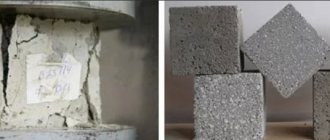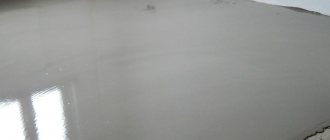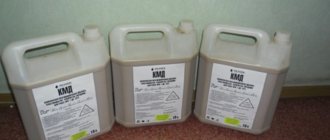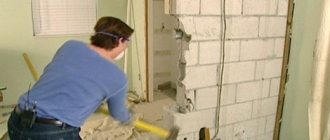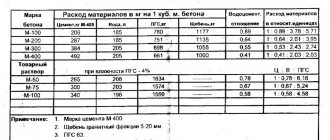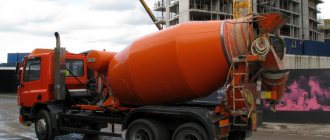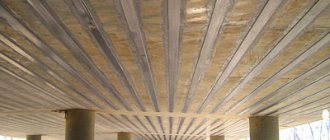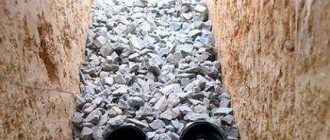We are pleased to welcome you to the website of our company, which over 2 decades of work has dismantled more than 3,000 structures. Our experience, our knowledge, our impeccable practice show that there are no indestructible building structures in the world. But it is extremely important to find the most suitable option for dismantling or demolishing a building or structure made of wood, metal, or brick. This will allow
- save time and financial costs for the client
- minimize noise and dissatisfaction of others
- ensure maximum safety of production processes.
Dismantling for us is an art!
And a separate genre of this art is working with concrete structures. Concrete is difficult to destroy. Firstly, it is not homogeneous in composition, which requires us to first test it for strength. Secondly, the development of concrete mixtures does not stand still. But even Soviet mixtures surprise with their record strength!
What does it represent?
This secondary material is the result of processing discarded building structures, reinforced concrete products, remains of dismantled buildings, structures, and highways. Crushed concrete also includes sand admixtures, various screenings, and parts of asphalt pavement. These particles can be of different sizes, and the largest according to GOST should not exceed 7 cm. The technical and physical parameters of the material are not inferior to its natural counterpart - it also has strength, durability, moisture resistance, and resists sudden changes in temperature, while its cost is low. Crushed stone from crushed concrete is prepared packaged or bulk; it comes in several fractions, depending on the particle size.
Crushing screenings include foreign components: particles of gypsum, sand, plaster, broken brick, organic substances (no more than 1% of their weight).
The process of crushing concrete and further processing of this material helps to save significant financial resources, while reducing the load on city landfills and reducing the number of spontaneous landfills. Cost estimates for new construction of facilities using waste concrete will be minimized, and the quality of the work performed will remain at the proper level.
Scope of application and fractionation of crushed stone
Important! The areas of application of crushed stone depend on its fractionation - this should definitely be taken into account when choosing a building material:
- fine-grained crushed stone (from 3 to 20 mm) - the most popular and in demand, often used in the production of concrete mixtures for foundations, the construction of road surfaces, for example, a bitumen-asphalt layer, as well as in the construction of bridge slabs and laying coverings on sports grounds;
- medium fraction (up to 40 mm) – excellent for filling areas where construction will be carried out using heavy special equipment;
- coarse-grained (up to 70 mm) - used for large-scale construction, construction of large buildings, laying railway tracks, monolithic supports and foundations.
Crushed stone is one of the most significant components or “ingredients” of a concrete mixture, so its quality directly affects the results of construction.
Sorting crushed stone into fractions using a vibrating screen.
Crushing equipment
To obtain crumbs, a special crushing plant is used.
Special equipment is used to grind concrete waste. The machine for processing and separating broken concrete into fractions is quite simple. This technique uses the principle of crushing materials. The installation itself consists of 2 or 3 main technical blocks. The first one deals with the reception and preliminary processing of loaded waste; it consists of the following parts:
- the place where the material is initially sorted (manually or using an excavator);
- receiving hopper;
- feeding conveyor.
The second block is a crushing bucket, where incoming waste is crushed. Crushing reinforced concrete requires the presence of a magnetic separator in the installation, which removes parts of reinforcement and other metal products from the mass. The separation of the processed material into fractions is carried out by a screen. The number of fractions is proportional to the number of screen cells. Large parts that do not pass this block are returned for re-grinding.
Crushed granite, crushed concrete and recycled crushed stone
It’s worth starting to compare these materials, widely used in construction, by studying the production process.The production of granite crushed stone takes place in granite mines, where rock is mined. The rock is separated from the rocky base and transported to the locations of the crushing and screening plants. At the location of the crushing and screening plants, the rock is stored in dumps, from which, with the help of excavators, it enters the bunkers of the crushing and screening plants, in which granite pieces are crushed (grinded) and sorted into various fractions. The resulting granite crushed stone is loaded and transported to places of sale. The most common fraction of granite crushed stone is 5-20, as it is used in the construction of roads, railway tracks, in the production of reinforced concrete structures and other works.
Crushed concrete is obtained in the same way as granite crushed stone, the only difference is in the raw materials. Crushed concrete is produced by crushing reinforced concrete pieces obtained during the dismantling of reinforced concrete structures. An essential feature is the presence of reinforcement in reinforced concrete, therefore crushing and screening plants involved in the production of crushed concrete are equipped with special magnets that separate iron impurities from the final material. Thanks to magnets, the output we get is crushed reinforced concrete, which is no different in shape and composition from granite crushed stone. The scope of application of crushed reinforced concrete is as high as that of granite crushed stone, and along with its several times lower cost, it is becoming more and more in demand every year in the construction market of non-metallic materials.
Some people believe that recycled crushed stone and crushed reinforced concrete are the same material, but they are wrong. Recycled crushed stone can be either granite or crushed concrete. Most often, as a rule, this type of building material is obtained by removing the top layer of crushed stone from railway tracks. Recycled crushed stone may be contaminated and contain impurities that fall on it from passing vehicles. The scope of application of recycled crushed stone is as diverse as that of its analogues, but most often it is used for the construction of temporary and installation of substrates for full-fledged roads.
We always have these materials in stock; to clarify the cost and delivery methods, contact our managers, and they will help you decide on the appropriate material for your work.
Quality Improvement Technology
There are specific processes to give building materials the desired characteristics.
Waste concrete contains a proportion of dissolving particles that worsen its physical and technical properties, especially frost resistance. To improve the quality of the material, activation technology is used. This process is aimed at destroying the smallest parts of the debris and removing cement stone, which leads to improved performance of the contact zone of the solution. Activation can be of 2 types:
- mechanical;
- chemical
The use of mechanical activation involves processing crushed stone in mixing machines or in special mills using metal balls. If before this the waste is heated to a temperature of 800 degrees, then the output is crushed stone with quality indicators close to those of the natural material.
Chemical activation is the removal of fossilized cement particles from waste concrete using chemicals that do not contain water - hydrated and anhydrous oxides. This method significantly improves the quality of the recycled material, but it is more expensive and labor-intensive. Due to the high technology of this process, such services are expensive.
Comparative analysis: pros and cons.
For an ignorant person, there are no special differences between crushed stone and gravel filling of concrete solutions, because both materials are functionally comparable in application. These materials are similar in structure and are obtained from mountain mineral deposits. But in reality, there are differences between them that are taken into account in the production technology of reinforced concrete products.
The main difference is in appearance. Gravel has a smooth surface, and crushed stone with unevenness and angularity has large fractional sizes, which gives the most reliable adhesion in concrete mixtures and, accordingly, provides an advantage in the manufacture of special structures (beams, slabs, columns, etc.).
Filling with granite crushed stone is suitable for the production of building foundations with various sizes. But due to the higher market price, it is not so in demand among developers of small housing constructions. When pouring foundations for simple low-rise houses, you can safely use a mixture of gravel with sand and cement to fill the concrete mortar, which can provide the required quality to such construction projects.
The cheapest and least durable option in the production of concrete mixtures is the use of limestone crushed stone, which is limited to use only in small buildings, for pouring the foundations of gazebos, garages and other utility facilities.
Application
Second-grade raw materials are required for the manufacture of tiles for paths.
Recycled crushed stone is widely used in the construction industry. It is used for the following purposes:
- Filler for new concrete and reinforced concrete products - slabs, lintels, some types of concrete, paving slabs.
- Basic crushed material for building foundations or floors.
- The basis for the construction of highways - temporary and main.
- Backfilling when laying sidewalks or parking areas.
- A means for changing the landscape - for filling ravines, swamps, ditches, ponds, holes.
- A substitute for natural gravel in the improvement of private houses and domestic buildings, the construction of wells and artificial reservoirs.
- Material for creating temporary dams and barriers in a disaster zone.
This direction of production of building materials from recycled materials is very promising. Research shows that when using recyclable materials for the production of crushed stone, the consumption of fuel and lubricants is 8 times less than when extracting it from natural conditions, and the cost of production is reduced by 25%. But existing enterprises with low-performance and worn-out equipment are not able to process the entire volume of construction waste. All this leads to the fact that high-quality material is simply disposed of in landfills, worsening the environmental situation.
Crushing concrete reinforced concrete
Concrete crusher: features of crushing reinforced concrete
Published by: Avtor 0
Concrete is a widely used building material nowadays. Covers almost all areas of construction:
Covering and construction of roads and bridges.
Laying and finishing of walls and ceilings.
When constructing radiation insulation.
Concrete and its applications
A good and practical feature of concrete is that it is highly recyclable. The main difficulty of this process is its extraction from various structures. For these purposes, various types of concrete crushers and special mechanisms are used. They can be presented as either attached equipment or independent stationary or mobile units. The first attempts to develop and use such equipment were made in the 60s. years of the last century. At this time, ideas arose for recycling various materials in order to save material and technical resources.
Concrete crushers
When demolishing old buildings and structures, more than 30% of concrete and reinforced concrete scrap is generated. Which can be reused without the need for disposal.
For primary crushing of concrete, directly at the work site, use:
For secondary crushing, mobile units are used, moved by tractors to the immediate site of demolition of the building. This allows you to reduce transportation costs.
Crushing reinforced concrete
The main difficulty of primary crushing is the extraction of reinforcement from reinforced concrete. For these purposes, hydraulic shears are used. This type of crushing equipment is mounted on special equipment and has a fairly simple design. Despite this, hydraulic shears have many advantages:
Speed of work and its accuracy.
Ease of use and reliability.
Almost complete absence of noise and vibration.
The simplest design of hydraulic shears allows them to be used all year round in all weather conditions. And the low noise level allows them to be used in any, even residential, areas of the city.
According to their main functions, hydraulic shears are divided into:
Crushers – for primary crushing.
Concrete breakers – secondary crushing.
For metal – for working with metal.
Universal - with different types of replaceable parts.
The remaining concrete mass is fed to mobile crushers, where, in addition to crushing, concrete waste is sifted into fractions (more details here).
Recycling of concrete
The resulting scrap concrete is delivered to specialized enterprises, where it is cleaned before recycling. For cleaning, the material is subjected to washing, chemical extraction of various impurities and salts, and drying.
Cleaned and dried concrete crushed stone is widely used in the construction of:
Garages and utility rooms.
Machine beds and units.
Recycling concrete allows you to save considerable money and resources in the construction industry, as well as eliminate environmental pollution by chemical products of natural decomposition.
Crushing reinforced concrete: features of construction waste disposal
In this article we will talk about the purpose and how crushing of reinforced concrete is carried out. In addition, we will consider what technologies and what equipment are used to carry out this work.
It’s probably no secret to anyone that at least half of the modern domestic housing stock was built in the 60-70s of the last century. Like any structures, buildings have their own operational life. As a result, construction sites are demolished and new buildings are erected in their place.
Production of recycled crushed stone directly on the construction site
Important: Each demolished object, to one degree or another, consists of reinforced concrete, which must be effectively recycled. And, if recycling bricks and ordinary concrete is not difficult, then recycling concrete products requires a special approach.
Features of recycling of reinforced concrete structures and products
Bulky construction waste resulting from the destruction of residential or industrial facilities poses a serious problem for many construction organizations.
Meanwhile, competently organized and effectively carried out recycling of reinforced concrete allows not only to solve this problem, but also to obtain an appropriate amount of secondary building materials.
Recycled building materials can be used as a cheap alternative to new, more expensive materials, and this advantage can significantly reduce the cost of subsequent construction.
Scope of application of recycled concrete
In the photo - cheap building material obtained by crushing reinforced concrete products
As already mentioned, recycling used building materials allows you to obtain fundamentally new materials, the price of which is affordable. If when processing bricks we obtain a type of construction sand, then as a result of processing reinforced concrete products we can obtain secondary crushed stone that complies with GOST 25137-82.
Crushed stone produced in this way is not much inferior to its natural counterpart, and therefore can be used in the following areas:
- when arranging the base of the floor and foundation with your own hands,
- in the process of construction and repair of asphalt concrete road surfaces,
- in the production of mortars as a filler with average strength parameters from 5 to 20 MPa,
- in the production of a wide range of prefabricated concrete products and monolithic structures,
- during the filling of temporary or secondary roads,
- when constructing all types of sidewalk paths,
- during the filling of the base for the construction of asphalt sites,
- during construction as backfill, instead of missing soil,
- when carrying out a wide range of works in landscape architecture.
Equipment for destruction and recycling of concrete products
Technological line using a hydraulic press for recycling concrete products
Dismantling of reinforced concrete and its subsequent recycling is carried out using specialized equipment - crushing and screening complexes or technological lines. Crushing and screening lines are, as a rule, stationary equipment, while complexes can be mobile.
The difference between waste processing on stationary and mobile equipment is significant. In the first case, you will need to load substandard concrete products onto a vehicle and take them to a special plant.
But upon completion of processing, the resulting recycled crushed stone will once again need to be loaded onto a vehicle and now delivered to the construction site where the processed waste will be used as building material.
In the photo - a mobile complex for processing construction waste
It is much more profitable to use a mobile complex, since this installation for recycling reinforced concrete can be used directly on the construction site.
The fact is that where a building has been demolished, there will always be new construction, which will most likely require crushed stone. As a result, we have a unique opportunity to save money and time by eliminating the transportation of waste and recycled materials.
Transportation of mobile equipment by wheeled transport
The complex equipment is based on powerful jaw or rotary crushers. Reinforcement metal inclusions are removed by screening. During screening, crushed stone of a certain fraction falls down onto a pallet, while metal remains on the mesh, which is collected and sent for remelting.
Recycling technology
The photo shows the complex during the processing of construction waste
The instructions for recycling large-sized construction waste involve the following stages of work:
- Large fragments of reinforced concrete products are destroyed using hydraulic shears to sizes suitable for loading into a crushing plant,
- The destroyed reinforced concrete products enter the installation, and the crusher for reinforced concrete is turned on,
- After grinding the material to the required fractions, the mass of processed material is sent to a vibrating sieve, where secondary crushed stone is screened out and metal inclusions are subsequently removed.
The technology, where the finished product is separated from metallic inclusions through a sieve, is traditional. Currently, new technologies for recycling reinforced concrete using magnetic screening have been patented.
This installation is based on a grinding screen, a system of electromagnets and a water treatment system.
The equipment used as part of the installation, according to its belonging to a particular technological chain, is divided into three categories:
- the first (preparatory) category includes bunkers designed for storing and supplying starting material,
- the second (technological) category includes an impact crusher designed to separate concrete and reinforcement, as well as a screen combined with electromagnets to capture heavy metals,
- The third category of equipment in this complex includes a conveyor and a water treatment system.
Important: In fact, a technological system with metal screening by means of a magnet works the same as a traditional system based on the use of a vibrating sieve. But when an electromagnet is used, the quality of cleaning secondary crushed stone is an order of magnitude higher, since metal inclusions are practically not found.
Recycling reinforced concrete not only has significant environmental benefits, but also an opportunity to save money by using recycled and therefore less expensive building material (see also the article “Reinforced concrete blocks - the basis of the modern construction industry”).
Sale of recycled crushed stone - obvious priorities of the buyer
For several years now, our company has been successfully selling bulk construction materials, which has allowed us to form a circle of regular customers and offer new customers the best conditions. The loyal pricing policy is complemented by high efficiency of order servicing.
Professional sales of recycled crushed stone are carried out within the framework of providing customers with the following advantages:
- sorted and unsorted secondary crushed stone of various fractions, complying with existing GOST standards;
- the possibility of prompt delivery of recycled crushed stone to the construction site;
- provision of necessary documentation for reporting;
- any form of payment;
- attractive offers for concluding long-term contracts with special benefits for the buyer
Today we offer you the best recycled crushed stone, the price of which is a clear demonstration of our company’s loyal pricing policy. This economical, recyclable material will enable builders to successfully complete their tasks at minimal cost.
Treatment
For subsequent use, such construction waste undergoes thorough processing, as a result of which it is separated from earth impurities. Very large fragments are crushed through hydraulic shears. After this, the broken concrete is thoroughly crushed using special crushing machines, after which the remaining fragments of reinforcement are removed using special magnetic sectors. Broken concrete is also called secondary crushed stone. This is the cheapest building material that any construction organization can offer.
